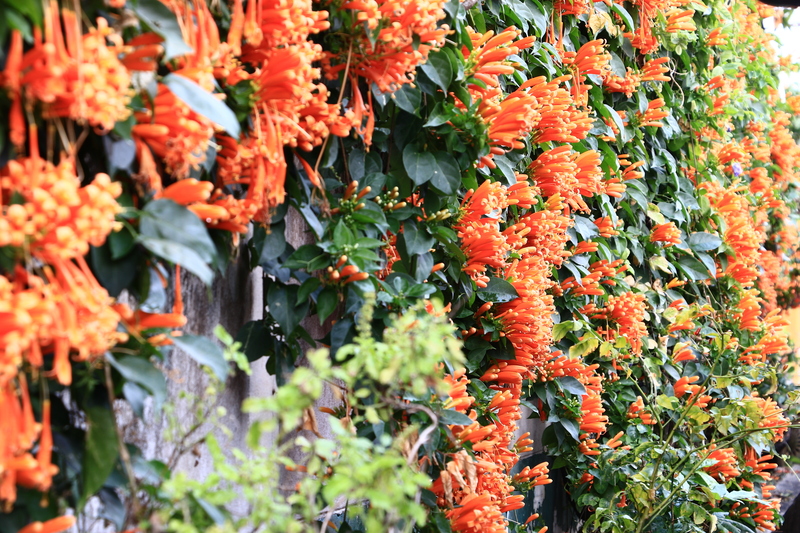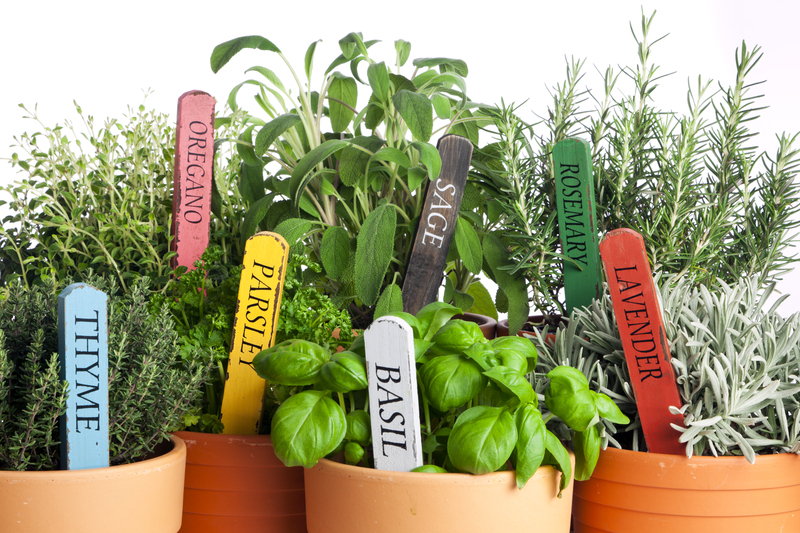Ensuring Plant Wellness Through Winter
Posted on 26/08/2025
Ensuring Plant Wellness Through Winter: Comprehensive Guide for Healthy Winter Gardening
As the days grow shorter and temperatures plummet, ensuring plant wellness through winter is a top priority for every gardener and plant enthusiast. Winter months pose unique challenges--freezing temperatures, drying winds, and limited sunlight can all take a toll on plant health. However, with the right winter plant care strategies, you can keep your indoor and outdoor plants thriving until the first signs of spring renew hope.
Understanding Winter's Impact on Plant Wellness
Winter brings dramatic environmental changes that can threaten even the hardiest plants. Frost, ice, snow, and reduced daylight can disrupt normal plant processes. Here are the main threats:
- Cold Damage: Freezing temperatures can rupture plant cells and tissues.
- Desiccation: Dry, cold winds and low indoor humidity can lead to moisture loss.
- Dormancy: Most plants slow down their metabolism, ceasing growth and using less water and nutrients.
- Pests and Diseases: Some pests become dormant, while others move indoors, and fungi can persist in wet, cold conditions.
Proactively addressing these challenges helps ensure winter plant health and guarantees a lush return in spring.

Preparation: The Foundation of Plant Wellness Throughout Winter
Assess and Adjust Your Garden
Before cold weather sets in, walk through your garden and evaluate every plant. Move sensitive or potted plants indoors, and insulate vulnerable outdoor varieties with mulch or row covers. Perform the following essential steps:
- Clean up debris to minimize disease and pest overwintering habitat.
- Prune selectively, removing dead or diseased branches but leaving enough growth for winter protection.
- Mulch around plant bases, using wood chips, straw, or shredded leaves to regulate soil temperature and retain moisture.
- Relocate containers to sheltered spots or indoors.
These tasks lay the groundwork for plant survival and vigor through winter months.
Caring for Outdoor Plants in Winter
Mulching for Warmth and Moisture
One of the simplest yet most effective strategies for maintaining winter plant wellness is mulching. Mulch acts as a barrier, buffering plant roots from rapid temperature changes and conserving vital moisture in the soil.
- Apply a 2-4 inch thick layer of organic mulch after the ground begins to freeze.
- Keep mulch a few inches away from plant stems to deter rodents and prevent rot.
- Renew mulch throughout winter if it breaks down substantially.
Mulching not only promotes winter plant health but also supports soil life through the coldest months.
Watering: The Overlooked Essential
Just because it's cold doesn't mean your plants don't need water. In fact, winter dehydration is a major cause of plant stress. Follow these watering guidelines:
- Water deeply before the ground freezes to provide a reserve for plant roots.
- During mild winter spells, check soil moisture and water if the top few inches are dry--especially for evergreens.
- Water early in the day to prevent surface ice overnight.
Consistent hydration ensures winter garden wellness--just avoid oversaturating frozen soil, which can cause root rot.
Shielding Plants From Extreme Cold
Prolonged exposure to freezing temperatures can damage or kill sensitive plants. Protect your garden with these practical tips:
- Cover plants with burlap, frost blankets, or old sheets during severe cold snaps.
- Build windbreaks with boards or fencing to reduce moisture-stripping winds.
- For small shrubs, create mini greenhouses with clear plastic domes, ensuring ventilation on sunny days.
- Wrap tree trunks in tree wrap or cloth to prevent sunscald and cracking.
Proactive protection is key to ensuring your plants survive winter unscathed.
Fertilizing: Less is Usually More
During winter dormancy, most garden plants require little to no additional nutrients. Fertilizing at the wrong time can spur tender new growth at the worst moment.
- Cease fertilization by late summer to allow new growth to harden off before frost.
- Resume feeding after the last freeze in spring.
- For winter vegetables (like kale or spinach), apply diluted liquid fertilizer only if plants show signs of deficiency.
By withholding heavy fertilization during winter, you help your plants focus on survival and root strength rather than risky top growth.
Indoor Plant Care for Winter Wellness
For many, winter means bringing houseplants or tender perennials indoors. Indoor conditions present a new set of challenges for plant health in winter--namely low humidity, less light, and potential pests.
Maximizing Light Exposure
Short, cloudy days can deprive indoor plants of vital energy. To maximize light:
- Place plants near south- or east-facing windows for the most sunlight.
- Rotate pots every couple weeks for even growth.
- Supplement with full-spectrum grow lights if sunlight is insufficient.
Proper lighting is essential for sustaining indoor plant wellness through winter.
Controlling Humidity and Temperature
Central heating systems cause dry air, leading to brown leaf edges or increased pest risk. Counteract dry air by:
- Grouping plants together to raise local humidity.
- Placing trays of water near radiators or beneath pots (out of direct contact).
- Misting foliage with lukewarm water in the mornings.
- Keeping plants away from direct heat sources or cold drafts.
Stable temperatures and moderate humidity are the cornerstones of winter plant health indoors.
Smart Winter Watering for Houseplants
Indoor plants use less water in winter. Overwatering is a common mistake--roots become susceptible to rot in cool, low-light conditions.
- Allow the top inch of soil to dry before watering most houseplants.
- Use room-temperature water and water in the morning.
- Avoid letting pots sit in standing water.
Monitor soil moisture levels diligently to prevent winter plant stress from improper watering.
Pest and Disease Vigilance
Pests such as spider mites, aphids, and scale insects can thrive indoors during winter.
- Inspect plants weekly, looking at both sides of leaves and stems.
- Remove pests manually or treat with insecticidal soap if infestations appear.
- Maintain good airflow, but avoid cold drafts.
- Isolate new arrivals for two weeks to prevent spreading pests or diseases.
Regular monitoring is critical for maintaining plant health through the colder months.
Specialized Tips For Different Plant Types
Evergreens (Trees and Shrubs)
- Water well into late fall to stave off winter dehydration.
- For newly planted evergreens, use anti-desiccant sprays or wrap in burlap during severe cold.
- Add fresh mulch after the first frost but before heavy snow.
Perennials and Bulbs
- Leave some stems and foliage to protect crowns from cold.
- Dig up and store tender bulbs (like dahlias) in a cool, dry place.
- Plant hardy bulbs in the fall for early spring blooms.
Annuals
- Pull up spent annuals and compost healthy debris.
- Plant cold-hardy annuals like pansies for winter color, depending on your zone.
Vegetable Gardens
- Use cold frames or row covers to extend the season for spinach, kale, and carrots.
- Mulch heavily after final harvest to support soil health.
Landscape Design for Enhanced Winter Plant Survival
Thoughtful landscape design can promote plant wellness throughout winter every year. Consider these planning tips:
- Plant windbreaks of evergreen trees or shrubs to shelter sensitive species.
- Use hardscape features like stone walls to radiate heat and protect microclimates.
- Cluster plants by hardiness zone to simplify protection strategies.
- Install raised beds or planters for improved drainage and warmth for winter veggies.
Integrative design helps build a more resilient winter garden, reducing annual workload.
Monitoring and Adjusting: The Keys to Success
Winter plant care is an ongoing process--regular checks allow you to catch issues early and make helpful adjustments.
- Check outdoor mulch and covers after storms.
- Look for animal damage or signs of rot.
- Routinely inspect indoor plants for pests, dryness, and light quality.
- Adapt your strategies as weather fluctuates throughout the season.
Document what works well and what doesn't for even better winter plant wellness next year.

Frequently Asked Questions About Winter Plant Wellness
Can All Plants Survive Winter Outdoors?
No-- only species rated for your local USDA Hardiness Zone can reliably survive winter outside. Move tender perennials and houseplants indoors, and research your plants' cold tolerance.
Is It Better to Prune Plants in Fall or Spring?
Most woody plants are best pruned in late winter or early spring, before sap flow and new growth. Remove only dead or hazardous branches in fall to avoid stimulating new growth susceptible to frost damage.
What If My Plant is Dropping Leaves in Winter?
Some leaf drop is normal as plants adjust to lower light or enter dormancy. Excessive drop may indicate over- or underwatering, low humidity, or sudden temperature shifts. Gradually acclimate plants when moving them indoors or out.
Can I Start Seeds Indoors During Winter?
Yes! Use seed-starting trays under grow lights to get a jump on spring vegetables or flowers. Maintain even moisture and provide adequate heat with seedling mats.
Conclusion: Encouraging Year-Round Plant Wellness
Ensuring plant wellness through winter doesn't require elaborate measures--just thoughtful preparation, diligent monitoring, and timely adjustment. By understanding your plants' specific vulnerabilities and needs, utilizing effective coverings, proper watering, and strategic design, you equip your plants to not only survive but thrive during the harshest months of the year.
Remember:
- Prepare early to prevent cold damage.
- Monitor weekly for emerging issues indoors and out.
- Adjust care routines to seasonal needs.
- Enjoy the beauty and resilience of your garden, even in the depths of winter.
With these comprehensive winter plant care strategies, every gardener can look forward to a vibrant spring garden emerging from a foundation of winter wellness. Happy winter gardening!

